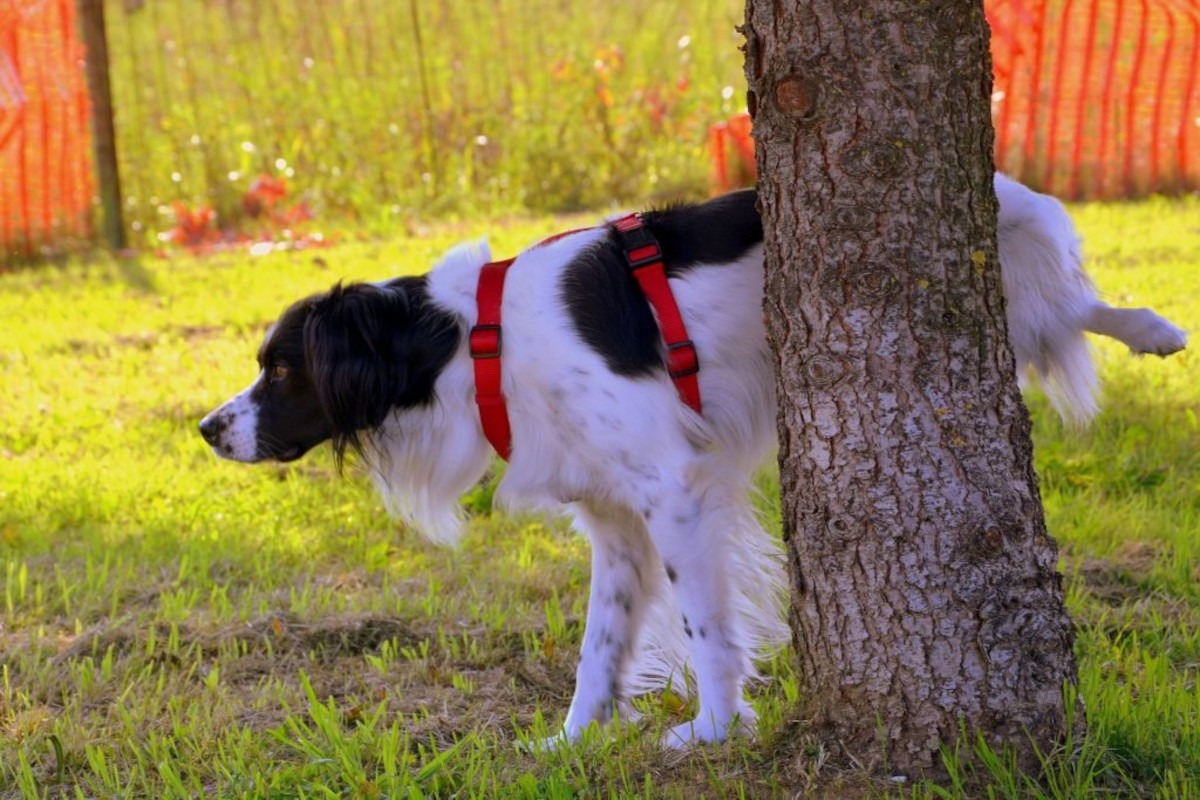
Don’t Let Your Old Or Sick Dog Become An Emergency Euthanasia
April 8, 2019
Cat Suddenly Urinating In House? Medical Causes And Symptoms
April 30, 2019The technical term for blood in dog urine is haematuria. And this is usually a sign that your dog has health issues. You should never ignore this symptom whether the blood loss is slight. Or if there are blood clots in dog urine, you may even see pure blood as if your dog is weeing blood.
For more information about blood in dog’s urine – what you need to know and do read on…
How to Spot the Signs
The normal colour of your dog’s urine is transparent yellow. It may be called straw yellow, clear yellow, pale gold, or amber by your vet. You can examine the urine colour in a clear container against a white background.
You may notice a colour change to a pink or red shade. Or find blood stains around your home. Your dog may need to urinate more often. And become incontinent – persistently licking and grooming in the groin area. Bear in mind there may not be any other symptoms at all.
Drops of blood in the urine are often associated with problems in the lower urinary tract. Blood clots in the urine can indicate internal haemorrhage, or a serious infectious disease. Sticky and dark urine could be due to bruises and wounds. Bright red blood in dog urine can be a sign of cancer in an older dog.
Puppies that urinate blood and vomit may be seriously infected with the canine parvovirus. This is potentially fatal if not treated quickly. The disease is highly contagious and is mostly seen in unvaccinated or immunosuppressed older dogs.
If blood is present in the urine of a pregnant dog this may be due to the death of one of the foetuses. In this case, your vet will need to surgically remove it to avoid infection of the mother and other puppies.
Understanding the Causes
There are many reasons for a dog peeing blood. And although your vet will not always consider it an emergency, they still need to evaluate the condition. The most common causes include:
- Bacterial infections – affecting the kidney or bladder as well as the prostate or urethra
- Injury – physical trauma can cause dog blood in urine
- Poisoning – if other symptoms are present such as coughing and difficulty breathing this could be due to ingestion of a toxic substance
- Stones – in the bladder or kidney can cause bleeding as organs are straining to pass them
- Prostate – prostatic disease may be the reason and urination will be laboured with a decreased stream
- Estrus – a normal part of female dogs reproductive cycles causing a bloody vaginal discharge in dogs that haven’t been spayed
- Tumours – benign and cancerous tumours may cause blood in dog urine
Getting a Diagnosis
Take your dog’s vaccination history and any other medical records that you have. This will help the vet to form a complete picture and find the cause.
Your vet may be ask you to stop your dog from urinating before the visit as they will need to collect a few drops. The vet will test your dog’s urine for the presence of disease or drugs. The name of this procedure is urinalysis.
Your vet takes a dog urinating blood very seriously, and they will carry out tests immediately. Following a physical examination – taking temperature, pulse, and respiration rates – your vet will evaluate your dog’s ears, eyes, mouth, heart and lungs.
Your vet will carry out screening for kidney and liver disease, bacterial infections, diabetes and cancer. They will also use ultrasounds to determine any stones or masses in the bladder.
Starting the Treatments
Following the diagnosis treatment will begin to address the underlying cause. Your dog may need to take intravenous fluids to stabilize it. If the blood loss has been great and the red blood cell count is very low your dog may need a blood transfusion.
Your dog can take antibiotics for kidney, bladder, and other infections. If injury is the cause the treatment will depend on the severity of the internal damage. As will the treatment of toxic ingestion. Your dog might have to take phosphate binders to encourage excretion of excess phosphorus from the body.
Treatment of bladder and kidney stones is possible through diet and increased hydration. But in severe cases your vet may need to be perform non-surgical or surgical procedures.
The vet will treat prostatic disease with aggressive antibiotics, neutering, or spaying. Draining or surgically removing cysts and abscesses is also possible. Dogs diagnosed with tumours may need to go to an oncologist for more specialised treatments.
Contacting Home-Visit Vets
Dog euthanasia at home may be your kindest and final option. You’ll be able to call at any time of the day or night to make an appointment with a vet in your own home. And discuss the process and what happens exactly. The welfare of your dog will be the top priority. You’ll feel reassured with the gentle pre-sedation and anaesthetic agents the vet uses during the procedure. And your dog will calmly drift into a peaceful sleep.








